

Some Definitions
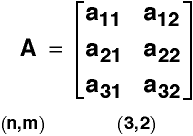
Some Matrix Operations
Multiplication by a scalar
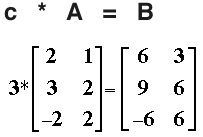
Matrix Addition (& subtraction)
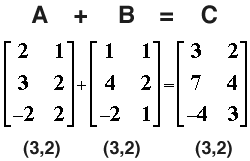
Transpose of a matrix
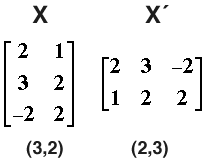
Note:
(A')' = A
(A*B)' = B' * A'
Matrix Multiplication
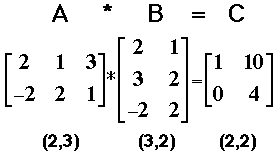
Note:
In general A*B does not equal B*A (commutative law)
(A*B)*C = A*(B*C) (associative law)
A*(B+C) = A*B + A*C
(B+C)*A = B*A + C*A (distributive law)
Identity Matrix

Note:
A * I = A
I * A = A
Inverse of a Matrix
Note:
A-1 * A = A * A-1 = I
In scalar terms:
a-1 = 1/a
a-1 * a = 1
The Seven Basic Matrices
| Raw Score Matrix (Data Matrix) | [vertical] |
| Raw Score SSCP | [square] |
| Deviation Score Matrix | [vertical] |
| Deviation SSCP | [square] |
| Covariance Matrix | [square] |
| Standard Score Matrix | [vertical] |
| Correlation Matrix | [square] |
Raw Score Matrix (Data Matrix)
Vertical Matrix
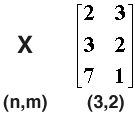
Raw Score SSCP
Square Symmetric Matrix

Deviation Score Matrix
Vertical Matrix
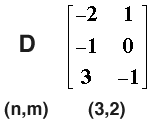
Deviation Score SSCP
Square Symmetric Matrix

Covariance Matrix
Square Symmetric Matrix

Standard Score Matrix
Vertical Matrix
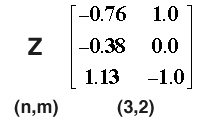
Correlation Matrix
Square Symmetric Matrix

Matrix Formulae for Regression Coefficients
b = (X´X)-1X´Y
b = (Zx´Zx)-1Zx´Zy
The b Vector

Regression Equations in Matrix Form
Y = Xb + e
Zy = Zxb + Ze
program define matreg
version 8.0
syntax varlist(min=2 numeric) [if] [in] [, Level(integer $S_level)]
marksample touse /* mark cases in the sample */
tokenize "`varlist'"
quietly matrix accum sscp = `varlist' if `touse'
local nobs = r(N)
local df = `nobs' - (rowsof(sscp) - 1) /* df residual */
matrix XX = sscp[2...,2...] /* X'X */
matrix Xy = sscp[1,2...] /* X'y */
matrix b = Xy * syminv(XX) /* (X'X)-1X'y */
local k = colsof(b) /* number of coefs */
matrix hat = Xy * b'
matrix V = syminv(XX) * (sscp[1,1] - hat[1,1])/`df'
matrix C = corr(V)
matrix seb = vecdiag(V)
matrix seb = seb[1, 1...]
matrix t = J(1,`k',0)
matrix p = t
local i = 1
while `i' <= `k' {
matrix seb[1,`i'] = sqrt(seb[1,`i'])
matrix t[1,`i'] = b[1,`i']/seb[1,`i']
matrix p[1,`i'] = tprob(`df',t[1,`i'])
local i = `i' + 1
}
display
display "Dependent variable: `1'"
display
display "Regression coefficients"
matrix list b
display
display "Standard error of coefficients"
matrix list seb
display
display "Values of t"
matrix list t
display
display "P values for t"
matrix list p
matrix drop sscp XX Xy b hat V seb t p C
end
use http://www.philender/courses/data/hsbdemo
matreg write read female
regress write read female